Peer-to-Peer Storage vs. Traditional Units
- September 26, 2025
- Cheap storage near me
Choosing the right storage option depends on your needs, budget, and priorities. Peer-to-peer storage connects you with individuals…
Read More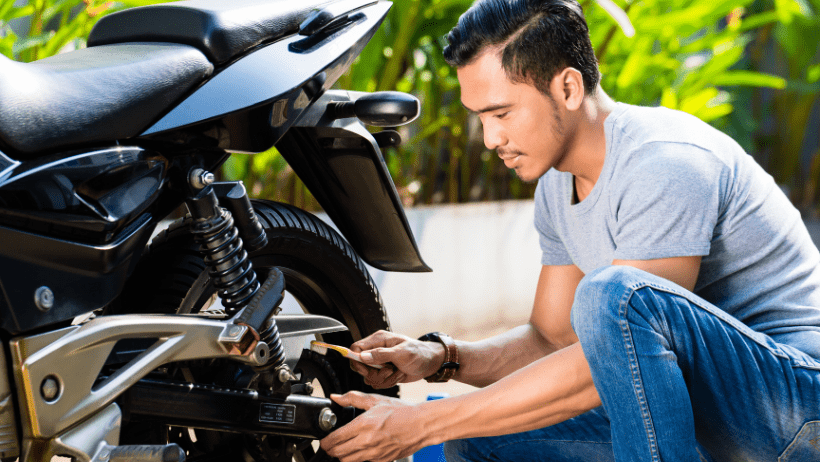
Proper motorcycle storage is an essential part of owning a bike, and it’s normal for a few winters to pass before you feel confident in taking this task on without a guide, so we’ve listed the most important steps for motorcycle storage.
This guide will explore choosing the right type of storage space, the steps to prepare your motorcycle for storage, and everything else you’ll need to keep in mind as the weather turns colder and you get your bike ready for the winter.
And of course, while this guide is aimed at preparing for winter because that’s the most common reason for long-term storage, a lot of these tips will apply for long-term storage during warm weather too.
If you have your own garage, that’s going to be most people’s number one choice of storage space. Although, there are several reasons to store off your property, which gives you various options for keeping a bike.
Some of these options will fit your needs better than others, and if you only have access to one of these types of storage spaces, then knowing the best way to keep your bike safe in each area will be crucial. Here are a few of the options you will come across when looking for a space:
The most important decision is whether you want your bike indoors in a climate-controlled area or securely stored outdoors. While outdoors might save you rental fees and be acceptable for drivers in milder climates or with less valuable bikes, most people opt for coverings.
If you opt for a garage, we’ll get into what that will entail below. If you opt for an outdoor space with a motorcycle shed, make sure to inspect it first, or if you’re bringing your own portable shed, check with your rental host that your plan works for them.
When storing any machine, including motorcycles, you can avoid a lot of problems by taking some basic steps to protect it. You’re trying to avoid rusting of the body and pipes, the fuel going stale or degrading, water damage if it gets in unprotected spaces, and more.
The amount of work you should do will depend on how long you’re storing your bike too, but for most storage times, you will want to do the following:
Clean and dry all surfaces of your motorcycle that have been exposed to the elements, and consider adding an anti-rusting agent to vulnerable areas of exposed metal or where there’s been paint damage.
Cleaning the bike before storage can also prevent damaging debris, insects, and dirt from causing long-term damage.

Leaving your fuel stagnant for too long can damage the engine, causing corrosion and leaving deposits when not properly treated. Depending on the fuel your bike uses, follow your manual’s recommended system to avoid long-term storage problems.
This will likely include adding a fuel stabilizer, additive or other treatment specific to the various types of fuel motorcycles can take.
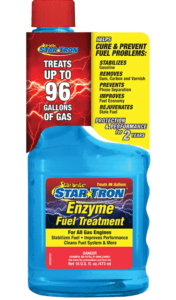
Star Tron Enzyme Fuel Treatment Stabilizer
After a long season of riding, your engine oil will be filled with combusted carbon that shouldn’t sit around in your engine for too long. Letting dirty oil sit for too long will corrode any metal it comes in contact with. Dirty engine oil must be disposed of according to local laws and regulations.
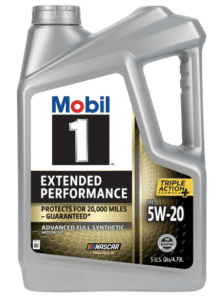
Mobil 1 Extended Performance Full Synthetic Motor
Some batteries are billed as maintenance-free, but your owner’s manual is worth checking for any long-term storage tips specific to your model. For older bikes, you might have to turn on your engine every few weeks to prevent the battery from dying during storage.
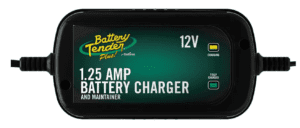
Battery Tender Plus 1.25 AMP Battery Charger and Maintainer
Tires don’t want to hold up weight in one position for an extended period of time – consider mounting your motorcycle on stands to take the weight off them or spraying your tires with a rubber-protecting spray. Reducing tire pressure can also help.
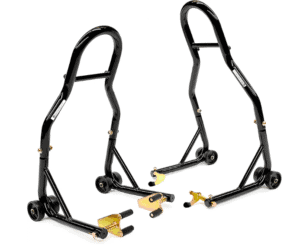
Venom Motorcycle Stand Lift Front Rear Combo Stand Lift Stand
After finding the storage space, you want to use, prepare your motorcycle for a long period of disuse. Once you moved it into its winter home, you should be ready to keep track of your bike regularly to make sure the steps you took ahead of time are functioning as planned, that the physical covering is still intact, and to deal with problems as they arise.
Common concerns for storing all types of machines that you should keep an eye on include rodent damage, water damage from leaks, and damage to storage structures from bad weather.
Proper motorcycle storage has three stages: choosing the right storage space, preparing your bike before putting it away for the winter, and, when possible, keeping an eye on it while it’s packed away. These three components of motorcycle storage take careful planning.
The right storage space is most likely indoors in a garage, but options for outdoor storage include a portable motorcycle shed or motorcycle covering, and you should carefully select your space based on how frequently you plan to inspect your bike and your concerns about weather damage.
Preparing your bike for storage involves multiple steps that are crucial to keeping the machine running smoothly in the spring.
These include changing the oil, treating the tires or propping them on stands, and preventing rust. Once your bike is safely stored, make sure to discuss with your hosts your schedule for inspecting the bike ahead of time, or if you’re renting an outdoor spot, be sure you’re allowed to perform maintenance in that space.
With these steps in mind, you will be ready to ride again safely in spring.


Join The Discussion